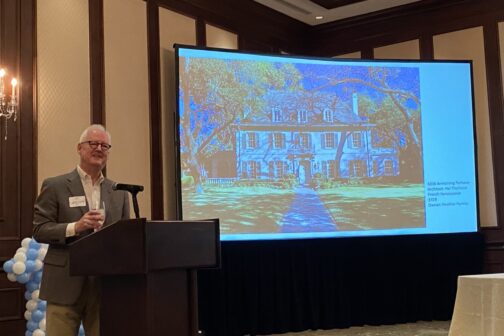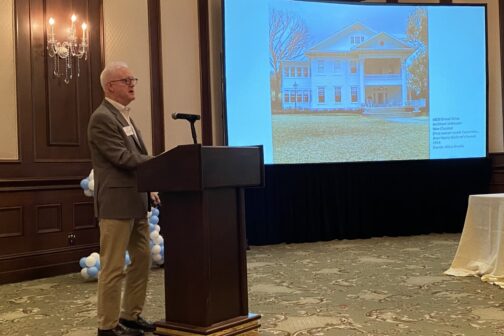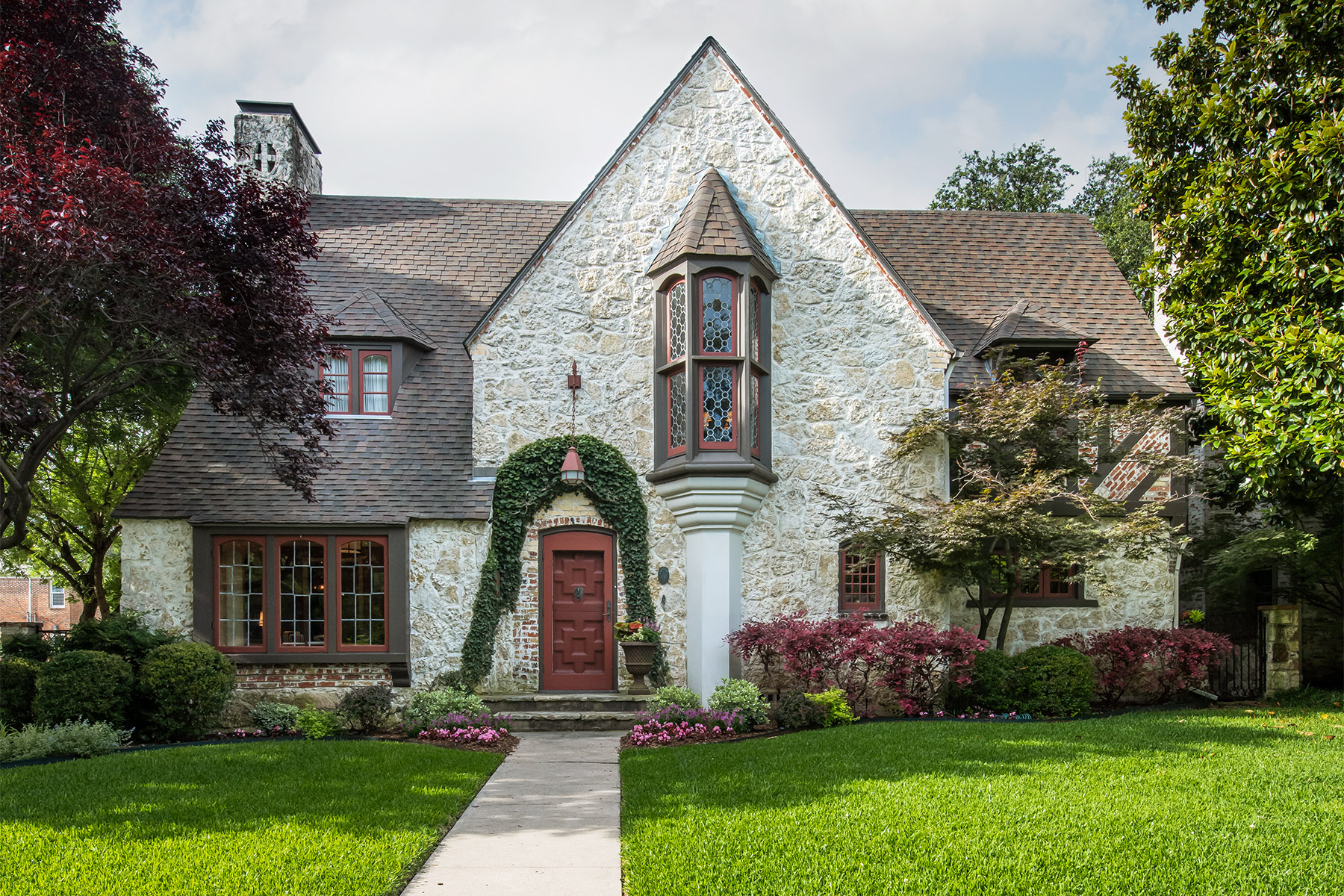Although there were balloons, champagne glasses, and a charcuterie table, the scene last week in Dallas Country Club’s ballroom was slightly more somber than you’d expect.
Last Thursday, Preservation Park Cities members and homeowners alike gathered to celebrate the organization’s Top 100 Significant Homes in Highland Park and University Park. Several years ago, after noticing how many historic houses in the area were being demolished, the preservation society began inventorying Park Cities’ 100 most historically significant homes.
“We have a problem,” former Highland Park Mayor Joel Williams says. “The problem that we’re talking about tonight—that we’ve heard about for years and years and years—is really the destruction of many of our historically significant homes.”
Since the Top 100 project started in 2020, they’ve lost eight homes from the list, says retired architect Larry Good, the event’s keynote speaker and author of A House for Texas. “So, I see the seriousness of how rapidly this has happened.”
The Top 100 inventory is part of a larger attempt to save these historic homes, which includes potential ordinances that would delay demolition, protect a property’s mature trees, and more. However, Good says getting historic protection ordinances is unlikely, so the “Endangered Significant Homes” committee, which he chairs, set about creating preservation best practices. The inventory was the start of that process, says Good, who personally surveyed 53 of the historic homes included.
“We were destined to lose these houses one by one, if we didn’t identify the most important of all of them,” Good says.
For a house to be considered historically significant by the committee, it needed to pass several criteria. First, it had to be, well, historic. But that definition is younger than you might think. Historic dwellings, Good says, must be at least 50 years old. “So that means now we’re talking houses that were constructed on or before 1972.”

Next, the committee judged the historic character of the home, as viewed from the street. These character-defining features include still-intact facades and roof forms. (For example, is it a Tudor? Well then, it better have a gable.)
After that, the houses needed to have at least one of seven other criteria points: Is it one of the better works from a revered local architect? Is it a shining example of a specific architectural style—or one of the earliest examples of that style? Is it the last of its style or kind in Park Cities? Did someone historically significant live in the house or is associated with it? Is it part of a special “district,” or a grouping of several homes that are tied together due to proximity and architecture or another characteristic? Does it have landscaping of “great excellence”?
There were way more than 100 homes that met these criteria, says Good, “but if we don’t focus, we’re gonna lose.”
During his talk, Good walked through each of the 100 homes, explaining the architectural importance of each. Good cracked jokes about how some homes—like Dallas Cowboys owner Jerry Jones’—were harder to shoot images of than others, due to their high gates. If the home’s owners were in the audience, he shouted them out and gave them the opportunity to add any other information about the house. At one point, someone from the audience announced one of the homes was for sale, and the entire crowd gasped.
After Good’s talk ended, the party turned celebratory again as the homeowners in attendance gathered to take a group photo and received a “Top 100” flag to fly from their property.
However, even as folks chatted while filing out of the ballroom, the mood was still one of earnestness and determination to preserve these historic homes, which Williams had established in his opening remarks.
“They’re special because they are the touchstones through our past,” former Highland Park Mayor Joel Williams says. “They’re the touchstones to our unique history and we’re losing them.”

The Top 10
The properties are divided into three sections, the top 10, the top 40, and the rest of the top 100—although Good notes none of the homes are ranked within their section. Below are the Top 10 homes.
- 4101 Beverly Dr.
- Built in 1912
- Style: Palladian Villa
- 4809 Drexel Dr.
- Built in 1914
- Style: Neo-Classical
- 4701 Drexel Dr.
- Built in 1958
- Style: Regional Contemporary
- 3805 McFarlin Blvd.
- Built in 1933
- Style: Texas Regional Modern
- 4321 Overhill Dr.
- Built in 1927
- Style: Mediterranean
- 3925 Potomac
- Built in 1921
- Style: Colonial Revival
- 4408 St. Johns
- Built in 1930
- Style: Texas Regional Modern
- 4606 St. Johns
- Built in 1964
- Style: Regional Contemporary
- 3444 University Blvd.
- Built in 1916
- Style: Neo-Classical
- “The Four Corners” District: 4200, 4201, 4144, and 4145 Shenandoah St.
- Built 1935–36
- Styles: Ranch, French Norman, French Norman, and Tudor, respectively
Get the AtHome Newsletter
Author






